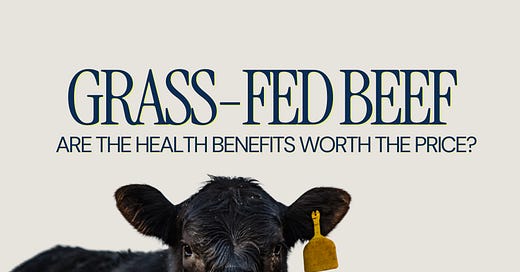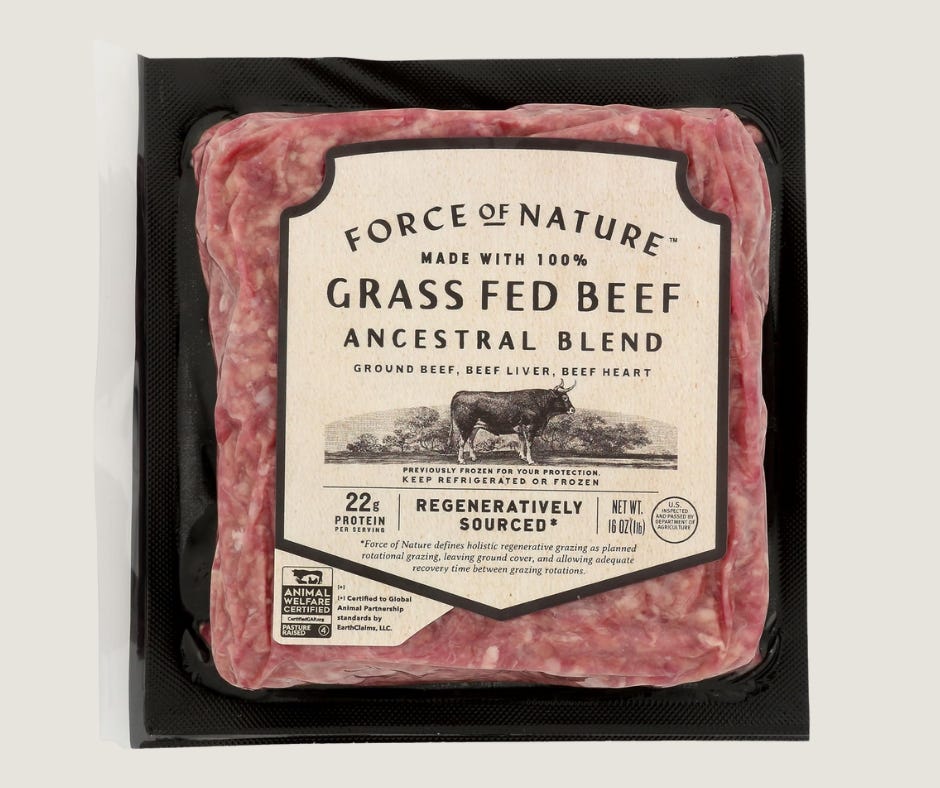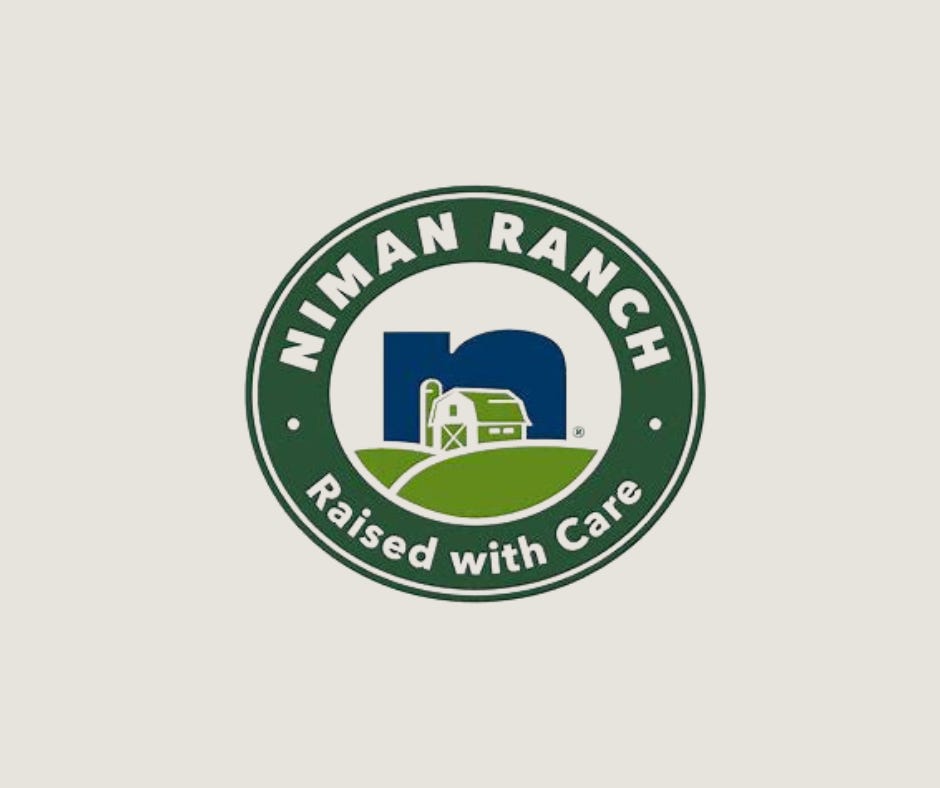If you’ve ever stood in the meat aisle debating whether to spend extra on grass-fed, grass-finished beef, you’re not alone. The labels can be confusing, the prices can be steep, and the supposed health benefits? Well, they might not be as dramatic as you’ve been led to believe.
Some of you may or may not know that I used to work for Pat LaFrieda Meat Purveyors—one of the most respected names in butchery. While I learned plenty about breaking down whole animals, I learned even more about sourcing—where meat comes from, how it’s raised, and what those labels really mean.
So, let’s break it down without the marketing hype so you can decide if grass-fed is worth it for you.
The Three Main Types of Beef You’ll See
Grass-Fed & Grass-Finished: The cow eats only grass its entire life. This beef is typically leaner, has a stronger flavor, and contains slightly more omega-3s and antioxidants than grain-fed beef. However, it's more expensive and can be tougher due to lower fat content. Because the USDA grading system prioritizes marbling (fat), grass-fed, grass-finished beef is rarely graded as Choice or Prime, since these cattle naturally have less intramuscular fat.
Grass-Fed, Grain-Finished (USDA Choice/Prime Angus): The cow starts on pasture but is finished on grain for marbling. This gives the beef a richer, more familiar taste, and it’s the most common option outside of commodity beef.
Traditional Grain-Fed (USDA Choice/Prime Angus): Cattle start on grass but are moved to feedlots for grain finishing. This beef is tender, well-marbled, and affordable. It has a higher omega-6 fat content but is still a good protein source.
Is Grass-Fed Beef Really Healthier?
The short answer? Not by much.
Omega-3s: Grass-fed beef has 2-5 times more omega-3s than grain-fed beef. Sounds impressive, right? But here’s the catch: beef isn’t a major omega-3 source to begin with. Even with the increase, the amount is still tiny compared to fish, eggs, or supplements.
Vitamins & Antioxidants: Grass-fed beef has slightly more vitamin E, beta-carotene, and CLA (conjugated linoleic acid), but the difference isn’t enough to dramatically impact your health if you eat a balanced diet.
Fat Content & Taste: Grass-fed beef tends to be leaner, which means less marbling and potentially tougher texture. If you prefer a rich, juicy steak, you might be happier with grain-finished beef.
What Big Ag Doesn’t Want You to Know About “Grass-Fed”
Here’s where it gets tricky—the label doesn’t always mean what you think.
🚨 Some “grass-fed” beef still comes from feedlots:
The USDA allows beef to be labeled “grass-fed” even if the cow was later grain-finished in a feedlot.
No strict verification is required, so large producers can slap a “grass-fed” label on meat that’s not truly pasture-raised.
🚨 “Grass-fed” can still mean grain byproducts:
Some cattle are fed silage, haylage, or grain-based forage but never eat fresh pasture.
This lets companies charge more for beef that isn’t truly grass-finished.
🚨 Most cattle in the U.S. CAN’T be 100% grass-fed year-round:
True grass-fed, grass-finished beef is difficult to scale because many regions don’t have the right climate to support year-round grazing.
Most U.S. cattle are raised with some grain supplementation, even on smaller farms.
So, Should You Buy Grass-Fed Beef?
If you prefer the taste of grass-finished beef or want to support small, regenerative farms, go for it!
For a balance of flavor and nutrition, grass-fed, grain-finished beef offers a great middle ground.
If you love a tender, well-marbled steak and want to keep costs down, traditional grain-fed beef is a perfectly fine choice.
Personally, when I’m buying ground beef, I go for Force of Nature ground beef and bison—it’s one of the few truly regenerative options I trust. Their products are built different— This is literally the only brand of ground meat I buy. The quality and taste are unmatched. For steaks, I simply buy what looks best at the counter.
One thing I avoid? Australian beef from Whole Foods. Since it's not graded by the USDA, there’s no official verification of quality or marbling, which is a problem when you're paying premium prices.
For options outside of smaller farms, I recommend Niman Ranch. I’ve been there in person, and I was really impressed. They finish their cattle on grain but use sustainable practices, and the farm is beautiful.
The bottom line? The nutritional differences between beef types are minor. If you're concerned about omega-3s, you're better off getting them from fish, supplements, eggs, or flaxseed, rather than relying on beef.
So, buy what you like, what fits your budget, and what makes sense for your diet. No guilt required!
Nutrients Found in All Beef (Grass-Fed & Grain-Fed)
Despite not being the best source of omega-3s, beef—whether grass-fed or grain-fed—remains an excellent source of high-quality protein, iron, zinc, B vitamins (especially B12), phosphorus, and creatine. Eat up!







